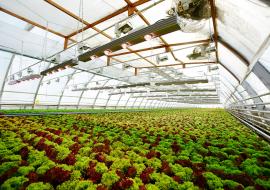Municipal water supply and wastewater treatment systems are among the most energy-intensive facilities owned and operated by local governments, accounting for about 35% of energy used by muncipalities.
Water and wastewater systems in the United States are estimated to consume 50,000 GWh, representing 1.4% of total national electricity consumption, and cost over $4 billion annually. However, according to EPA’s ENERGY STAR® program, 10% savings can readily be achieved in this area.
Water and energy are interconnected in two important ways:
- Water is a very electricity-intensive resource. Electricity is required to source, treat, and transport potable water and to collect, transport, treat, and discharge wastewater. Water and wastewater can account for more than half of many municipalities’ electricity bills (Elliott 2005). As a result, water efficiency—using less water to meet consumers’ needs—can represent an important electric efficiency opportunity.
- Water is a critical resource required for electric thermal power generation, both as feedwater for boilers and as cooling water for condensers for steam systems, whether fueled by coal, natural gas, or nuclear fuel. Thus, water requirements for electricity generation compete with other uses for and users of the resource.
From an energy efficiency perspective, water represents an important opportunity for energy savings. These savings can come from using less water—water efficiency—and from using less energy in water and wastewater systems. As climate change makes water scarer in many parts of the country, these efficiency measures gain additional importance.
Achieving these savings will require increasing awareness of this water-energy nexus and building bridges between the energy efficiency and water communities to spark innovations through research and development, ultimately increasing energy efficiency while reducing treatment costs and infrastructure and capacity-building expenditures. An acknowledgement of this linkage is becoming evident in water-constrained western states, but interest is growing more broadly as energy and resource constraints impact communities across the country. ACEEE continues to explore the linkages between water and energy in many end-use sectors, including agriculture, manufacturing, and buildings.






